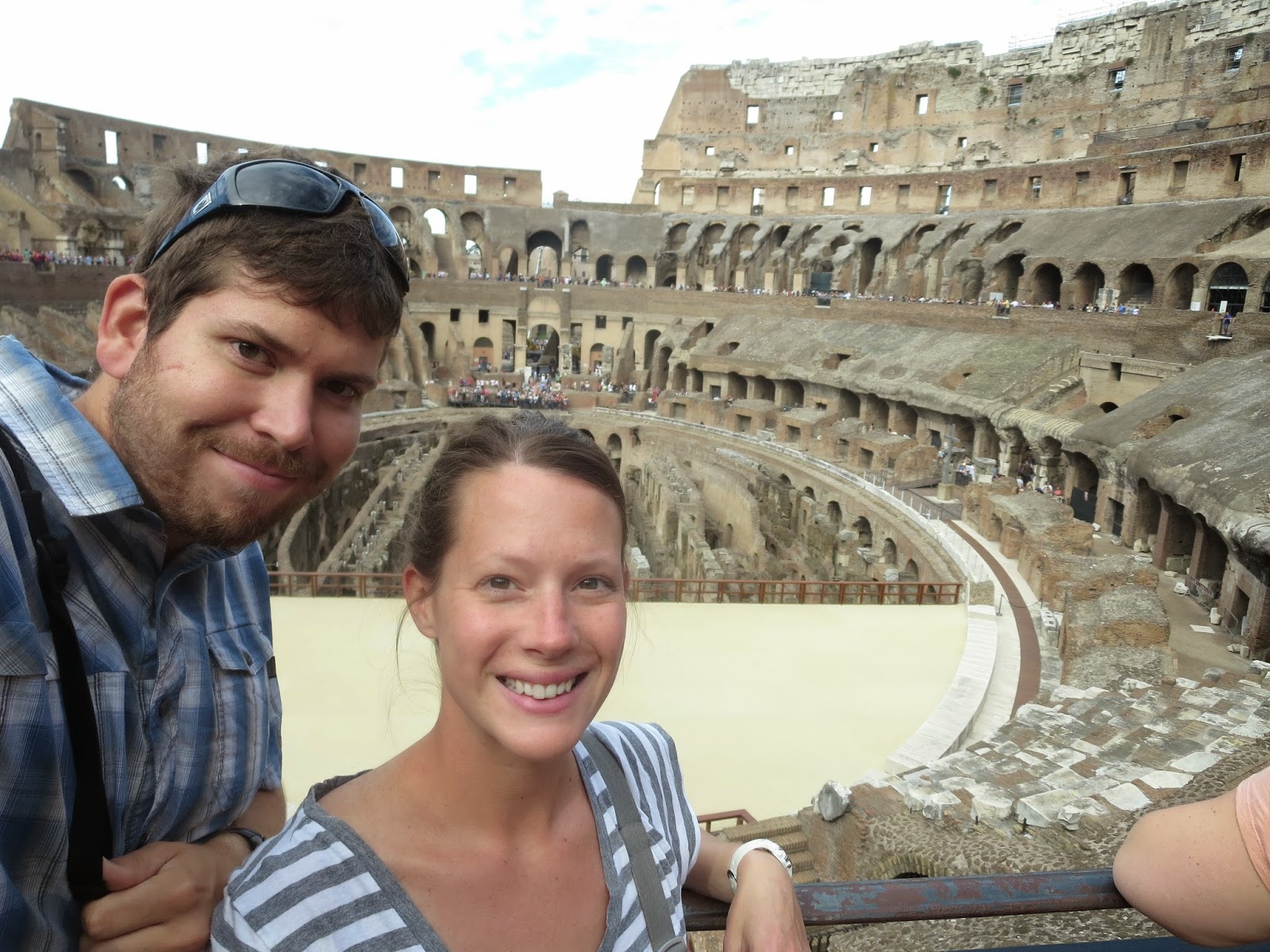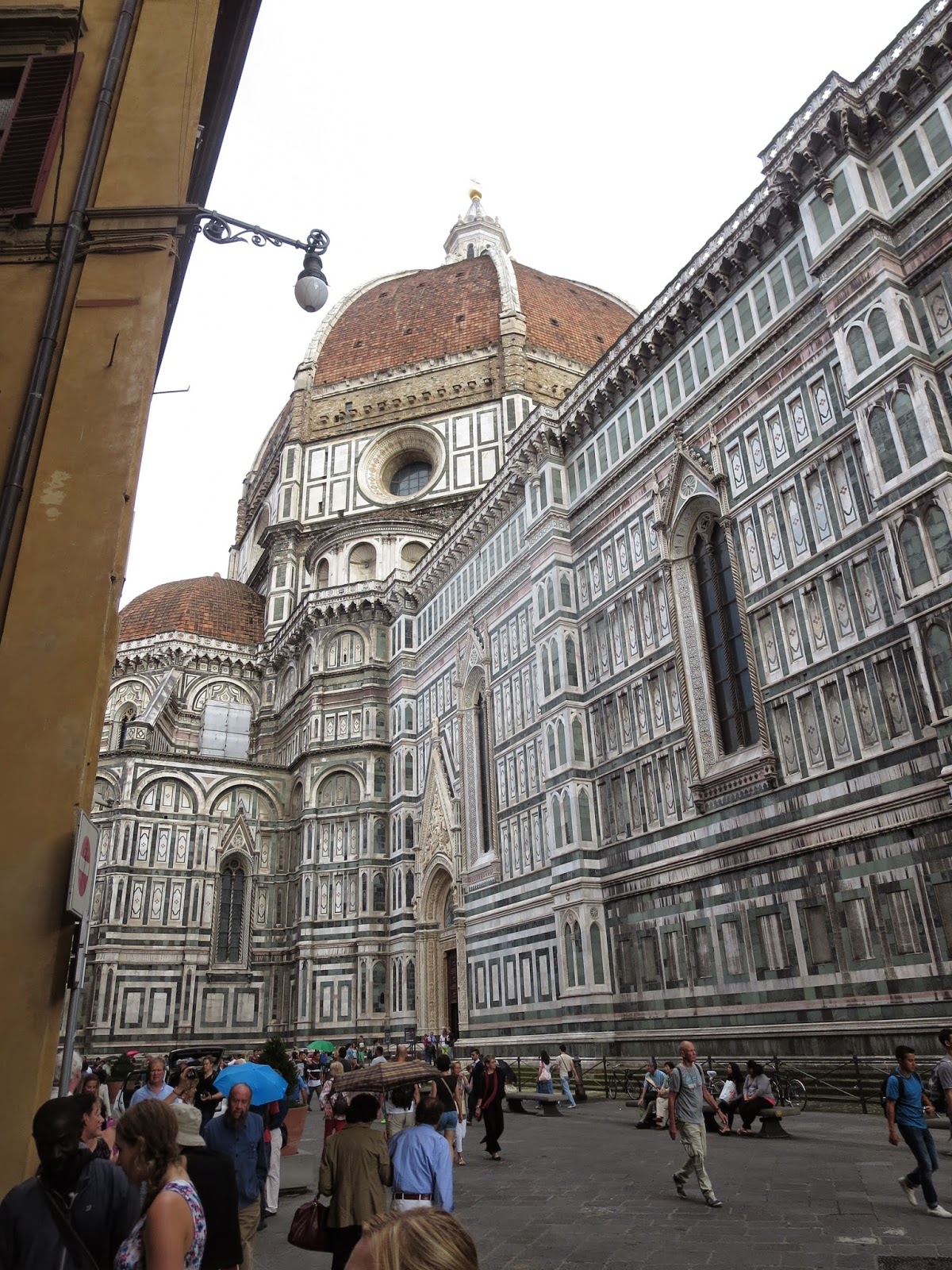The Vatican Museum is a essentially a giant museum filled with stuff the people have given the Pope, the Pope has commissioned, or the Pope has acquired in Pope like ways (conquest, etc.). The way the signage was written made you feel like you were in the Pope's house checking out his stuff. Like the way I show friends the Henry painting Shannon got me for my birthday. The only difference is the Pope has stuff from the Teenage Mutant Ninja Artists (still not old). In particular, we enjoyed the Raphael Rooms (below).
And of course, the best part of the Vatican Museum is the Sistine Chapel (unfortunately, they don't allow pictures here). This is the place where they pick a new Pope and where Michelangelo's' fresco work adorns the walls and ceilings. It's said that this maybe the single greatest artistic work in the world. It's more than a football field of religious stories, etc including the famous Creation of Adam scene. Google it and you'll go, "oh yeah, that one."
After this we were off to St. Peter's. This massive church was built where St. Peter (the original Pope according to Catholicism) was martyred by Nero and eventually buried. When we got to the square, we discovered it closed off because the Pope had just given his Wednesday blessing. It was incredibly lucky that we managed to glimpse the Pope greeting folks. I regret to inform our friends that he blessed our fantasy football team, so we've got divine intervention (collusion?).
St. Peters was stunning because it's just ENORMOUS. There are markings on the floor showing the size of other church's around the world and it just demonstrates how huge the church is.
On the way out of the Vatican, we glimpsed the Swiss guard. Nice.
We hopped the train and escaped to the hill town, Orvieto, where we are currently recovering from our Rome travel sprint.

















































